










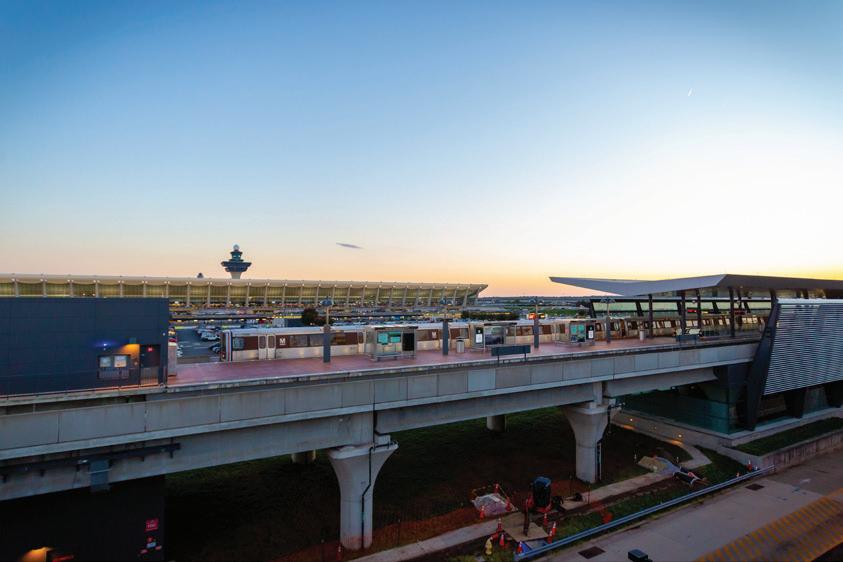

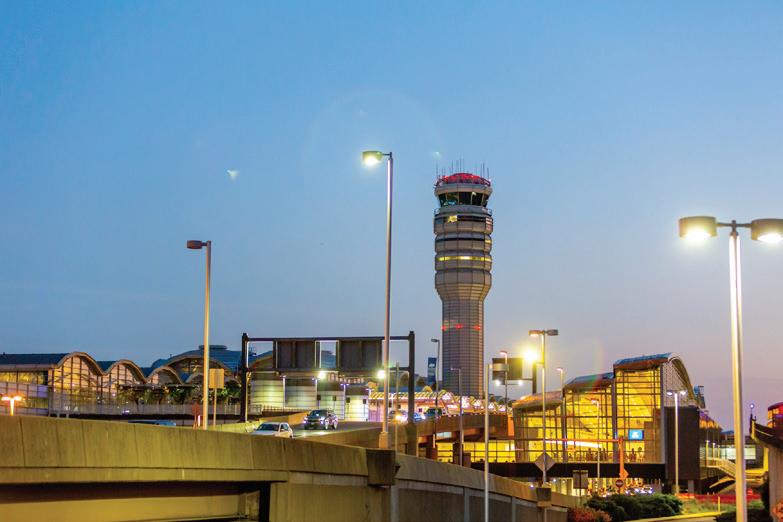






2023 – Issue I


Publisher
Shelton A. Russell
Managing Editors
PR PROS, LLC

Creative Director
William Cash
Digital Media
Premier Web Design Solutions
Editorial
Peggy Beach
Rita Ohaya and Kunqi Zhang
Philip D. Russell
Shelton A. Russell
Rodney Strong and Trinity Williams
Laurie D. Willis
Headquarters
514 Daniels Street, #186 Raleigh, NC 27605
Website www.AmericanDBE.com
About American DBE Magazine
American DBE Magazine is the premier industry resource for individuals and stakeholders who work in the infrastructure, construction and transportation industries. American DBE Magazine is published quarterly and distributed in all 50 states— plus Puerto Rico and the U.S. Virgin Islands—to DBE program administrators, business owners, and professionals in the Aviation, Highway Construction and Public Transit industries.
Subscriptions
American DBE Magazine is published quarterly in Fall, Winter, Spring and Summer editions. The annual subscription rate is $24.99 including online editions, special industry reports, and four issues: single copy list price is $6.99 plus postage originating from Raleigh, North Carolina.
Branding Campaigns
Copywriting & Editing
Crisis Communication
Graphic Design & Layout
Media Coaching & Training
Public Relations & Media Relations
Research & Strategic Planning
Social Media Management
Strategic Communication
Video Production Services
Infrastructure, construction, and transportation companies are experiencing the greatest economic boom in more than a decade. Increasing opportunities from the federal Infrastructure Investment and Jobs Act, increasing infrastructure investments by state and local governments, and the loss of some industry firms during the worldwide pandemic are creating great opportunities for companies with the capacity to expand to meet the increased demand.
Making hay while the sun shines is an apt description of the entrepreneurial environment today. The only limiting factor for businesses seems to be having the operational, human, and financial resources to convert the green grass of opportunity into the hay of the profits capable of moving businesses to new levels of success. The current discussion is a long way from two years ago when the main topic of discussion was business survival and seeing the light at the end of the tunnel during the pandemic.
This issue of American DBE celebrates the companies and organizations striving to make hay during this time of opportunity and meeting the demand for increased

infrastructure development and financial recovery. Demand in some industries is at historic levels and diverse firms across the country are ramping up to help meet the demand.
Our cover story features the growing airport concession brand Hip & Humble, owned by ACDBE operator Sheridan Mordue. Mordue received an opportunity to expand her Salt Lake City, Utah-based retail store into the new Salt Lake City International Airport before the pandemic and despite a historic economic downturn, opened to great success in 2022. Hip & Humble has since opened a second location in Salt Lake City Airport and a new location in the Fort Lauderdale-Hollywood International Airport. Mordue is currently planning to open a location in Houston’s Bush Intercontinental Airport in 2025.
This issue also features the work of the Equity in Infrastructure Project aiming to make a transformational change for historically underutilized businesses by encouraging government and private organizations to make fundamental changes to increase economic opportunity and wealth-building for diverse businesses. National Transportation leaders Phillip Washington and John Porcari lead this initiative and are engaging executive leaders across the country to join in the movement.
Another feature story discusses the ongoing challenges to affirmative action laws that support diversity, equity, and inclusion. Attorney Rodney Strong and Trinity Williams share strategies for industry professionals to face this threat while still

advancing programs to increase access and business success.
New Orleans, Louisiana-based Blackstar Diversified Enterprises is this issue’s DBE Power Player due to their expanding growth in energy distribution and traffic signals and equipment; and the Program Spotlight column is focused on the new Mobile International Airport Downtown Terminal Project, led by Airport Director Chris Curry.
Other stories in this issue include Philadelphia’s SEPTA hiring its first DEI Administrator Emmanuella Myrthil, McKissack & McKissack leading diversity efforts on the JFK Airport Terminal One Project in New Yovrk, and the transformation of the Louisiana Department of Transportation and Development’s DBE Program under former Secretary of Transportation and current Louisiana gubernatorial candidate Shawn Wilson.

These organizations are making hay while the sun shines and advancing efforts to increase opportunity, business growth, and increased wealth for diverse businesses. It is my hope this issue of American DBE Magazine will hopefully encourage you to do the same.

Best Regards,
 Shelton A. Russell, Publisher American DBE Magazine
Shelton A. Russell, Publisher American DBE Magazine

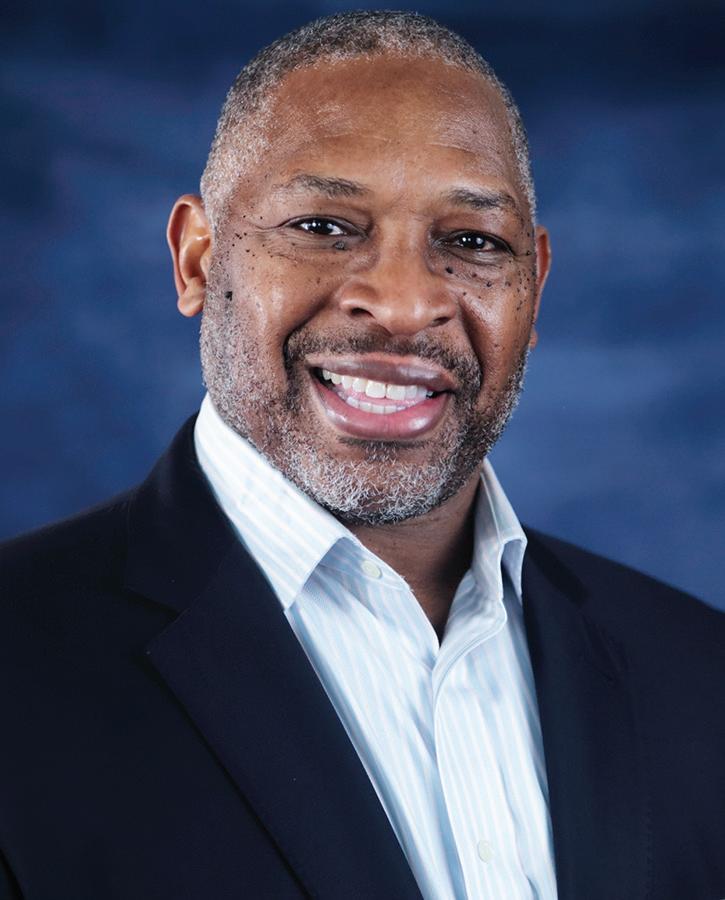
secretary of transportation and has served as secretary of the Maryland Department of Transportation.

Federal regulations creating programs to increase business opportunities for small and diverse businesses have traditionally focused on participation as the key metric of success. The assumption, or hope, in these programs is that increased participation by historically underutilized businesses in contracting opportunities will result in economic advancement and greater wealth creation for these entrepreneurs, ultimately leading to the advancement of underserved communities.
Programs such as the U.S. Department of Transportation Disadvantaged Business Enterprise Program use overall program goals and contract goals to measure the percentage of contracting dollars paid to diverse businesses, but wealth creation is not included as a measure of success In fact, some business owners argue that the program creates provides a disincentive for wealth creation; because as a diverse business creates wealth, they are in danger
of becoming ineligible to participate in the program—in some ways a conflicting measure of success.
Transportation leaders Phillip A Washington and John D Porcari recognized the potentially transformative impact of the $1.2 trillion I n f ra s t r u c t u re I n v e s t m e n t a n d J o b s A c t and the commitment of the Biden-Harris Administration to make equity a priority and cofounded the Equity in Infrastructure Project (EIP) in April 2022. EIP’s goal is ensuring historically underutilized businesses have the maximum opportunity to access the wealth creation opportunities that will come from transportation and infrastructure projects happening over the next five years, Washington is CEO of Denver International Ai rport a nd ha s a di stin guis hed ca reer in the transportation industry, including leading Los Angeles County Metropolitan Trans po rt a tio n A ut ho rit y an d D en v er Regional Transportation Authority. Porcari previously served as United States deputy
Wa shington and Porcari are two of 5 leaders of the Biden-Harris Administration Advisory Committee on Transportation Equity (ACTE). Their role includes providing advice and recommendations to the Secretary of Transport ation on c omprehensiv e , i n t e r d i s c i p l i n a r y i s s u e s r e l a t e d t o transportation equit y from a variet y of stakeholders involved in transportation planning, design, research, policy , and adv oc acy in pursuit of the Department’s equit y g o a ls. One of the committee’s key objectives is advising Transport ation Secretary Pete Buttigieg on we a lth cre ation, including strategies to help small and d i s a d va n t a ge d b u s i n e s s e s build capital, expand business network s, and att ain new skills and experience through increased USDOT contracting opportunities. These efforts are in line with advancing the Biden-Harris Administration’s Justice40 Initiative, ensuring that underserved populations receive at least 40% of the benefit of infra structure investments, and Executive Order 13985—Advancing Racial E quit y and Support f or Under serv ed Communities. “Wealth creation is our North Star,” Washington said.
To operationalize the policy and advisory work on the ACTE, Washington and Porcari cof ounded the Equit y in Infra structure Project to take practical and deliberate steps to effect change in the infrastructure contracting industry. “We are committed to taking an important part of the Biden-Harris Administration’s Equity Policy, which is the creation of generational wealth through this generational infrastructure opportunity and building some facts on the ground,” Porcari said.
EIPs mission is to increase generational wealth in underserved communities through business opportunities on infrastructure investments completed by transportation a ge n c i e s f u n d e d b y t h e I n f ra s t r u c t u re Investment and Jobs Act. EIP works in parallel with the contracting equity and diversity program of transportation agencies to expand opportunity, increase capacity and increase
the wealth-building capability of companies owned by minorities and women.
EIP adds the critic a l c omponent of promoting prime contracting, joint venture participation, and equity participation to the traditional metrics of subcontracting participation. This added component adds a turbo charge to the wealth-building ability of companies participating at higher levels in the contracting process of transportation agencies. “To increase generational wealth, this can not be all subcontracting. It has to be an increase in prime contracts with the expectation that if historically underutilized firms are awarded prime contracts, they will hire other diverse workers that will increase generatitonal wealth in underserved communities,” Washington said.
EIP is built on the fundamental belief that committ ed CE O l e ader ship is the ke y determinant of success in creating organizational change. Therefore, the first step for an organization joining the effort is the chief executive officer to sign a pledge to lead the agency in expanding opportunities for diverse firms through prime contracting, joint ventures, and equity partnerships in major infrastructure projects.
The pledge includes a commitment by executive leaders of organizations to take several steps:
1) increase the number, size, and proportion of contracting opportunities going to HUBs;
2) increase the number, size, and proportion
of contracting opportunities going to HUBs as prime contractors;
3) streamline the administration of contracting with HUBs to centralize certification;
4) improve payment time, and standardize transparent data collection;
5) increase the amount and type of appropriate financing available to HUBs aiming to meet infrastructure contracts by working with private and public partners; and
6) expand the number of signatories to this pledge.
Fi v e i n d u s t r y e x e c u t i v e s b e ca m e t h e first mover agencies to take the pledge in June 2022, including Chicago Transit Authority (CTA) President Dorval R. Carter, Jr.; Denver International Airport CEO Phillip A. Washington, Port of Long Beach Executive Direct or Mario C ordero , Metropolit an Wat er District of Southern C a lif ornia General Manager Adel H. Hagekhalil, and Southeastern Pennsylvania Transportation Authority (SEPTA) General Manager and CEO Leslie S. Richards.
“At CTA, we understand that every dollar we spend, every investment we make and e v ery decision we execute impacts our customers and the communities we serve,” said Chicago Transit Authority President Dorval R. Carter, Jr. “It’s important that we all govern ourselves accordingly when providing job and contracting opportunities, to ensure an equitable process.”
As of March 1, 2023, executive leaders of eighteen state transportation agencies (STAs) have signed the pledge to become partners in the EIP. The first six STAs signed the pledge in November 2022 at the American Association
of State Highway Transportation Officials Conference in Las Vegas, Nevada. The signers included California State Transportation Agency Secretary Dr. Toks Omishakin, District Department of Transportation Director Everett Lott, Illinois Department of Transportation
Secretary Omer Osman, Kansas Department of Transportation Secretary Julie Lorenz, and Louisiana Department of Transportation and Development Secretary Dr. Shawn Wilson and Michigan Department of Transportation Director Paul C. Ajegba, P.E. Twelve additional executive leaders of STAs signed the pledge on March 1 during the American Association of State Highway and Transportation Officials 2023 Washington Briefing in Washington, D.C.
As more executive leaders sign the pledge, Washington and Porcari are working to ensure EIP develops concrete actions and best practices to help agencies maximize the impact in their contracting and procurement proc es s. EIP est ablished an advisory committee comprised of industry leaders from leading engineering and construction firms, historically underutilized businesses, and pr oc ur ement offic er s t o disc us s strategies to remove practical impediments to success for diverse firms. “The committee is looking at issues such as certification, access to capital, capacity building, insurance & bonding, and metrics to best operationalize the effort “The petri dish for innovation is at the local level and changes made there by committed individuals aggregate into national policy,” Porcari said.
Agencies that have signed the Equity Pledge
AGENCIES: Chicago Transit Authority
Denver International Airport
Port of Long Beach
Metropolitan Water District of Southern California
Southeastern Pennsylvania Transit Authority
CITIES:
City and County of Denver
City of Philadelphia
COMPANIES: AECOM
Anser Advisory
Dikita Enterprises
Environmental Financial Consulting Group
Evolution Advisors, LLC
Gannett Fleming
HNTB
J. Morey Company, Inc.
Merriwether & Williams Insurance Services
Milhouse Engineering & Construction, Inc.
Somat Engineering
STV
NON-GOVERNMENTAL ORGANIZATIONS:
American Public Transportation Association
Airport Minority Advisory Council
Conference of Minority Transportation Officials
Eno Center for Transportation
Signers of the pledge commit to reviewing their past performance in contracting with historically underutilized businesses to establish a baseline and then establish selfimposed goals for improvement by December 2026. An important component of the goal-setting process is reviewing projected procurement activities to determine ways to structure contracts to encourage historically underutilized businesses to compete for prime contracts, or to be members of joint venture teams that are leading major infrastructure projects.
Washington envisions historically underutilized firms first serving as joint venture partners to large firms, but then pursuing roles as the lead member of a joint venture team in the future, with larger firms working as supporting partners. “This is not about taking one piece of pie from one firm and giving it to another, this is about a bigger pie. This industry has capacity issues, and we need to create more firms that can help complete contracts,” Washington said.


EIP is continuing efforts to recruit more organizations to sign the pledge and commit to expanding contracting opportunities for historically underutilized firms. In addition to transportation agencies receiving federal funding through the Infrastructure Investment and Jobs Act, EIP expects major construction and engineering firms to join the initiative to maximize the impact on the industry. Washington’s goal is for all 50 state departments of transportation to sign the pledge.
Porcari also expects the impact of the advisory committee to have an impact on federal and local policies for the inclusion of historically underutilized businesses. As agencies consider efforts to reduce barriers in the certification process, he is hopeful for greater reciprocity between agencies regarding certification, ultimately leading to a national certification process for the DBE program. Both leaders are determined to ensure that EIP drives an earnest and determined commitment by major
organizations to address the historical underutilization of diverse firms in the transportation industry and to effect change leading to wealth creation in underserved communities. This fundamental change will add more capacity to the infrastructure industry and encourage more talented entrepreneurs to pursue contracts to build the next generation of projects to improve America’s roads, bridges, airports, transit systems, and other infrastructure needs. Washington said, “this is not just a press release and move on type of thing. That’s not how it works. We must commit to seeing it through.”




It is clear to even a passive observer of current events that diversity, equity, and inclusion are under attack in the United States. The decisions of the Supreme Court have always been a determining factor in the continuous struggle for equal opportunity for African Americans, women, and other minority groups, and recent challenges to affirmative action have been no different. Recent changes in the composition of the Court have precipitated challenges to what had been considered settled law and represent a sea-change in the landscape of equal rights. This shift poses an existential threat to programs seeking to promote equity in educational institutions, public contracting, and even the corporate sphere. The question we must ask ourselves as diversity, equity, and inclusion professionals in procurement is what, if anything, can we do next? How do we continue to combat barriers in the marketplace to ensure that minority, women-owned, and disadvantaged businesses have a fair chance at success?
While an anti-affirmative action ruling seems unsettling, it is a possibility we have prepared for in the past. In the case of City of Richmond v. J.A. Croson,[1] it was determined that the Equal Protection Clause of the 14th Amendment did not allow the City of Richmond’s minority set-aside program to set goals that give preference to minority businesses when awarding municipal contracts. The Court determined that the city had failed to demonstrate both the need for corrective action and the inadequacy of available “race-neutral” remedies. One of the authors of this article, Attorney Rodney K.

Strong, put together a group of lawyers, economists, and statisticians in 1989 to craft the City of Atlanta’s first disparity study in response to the Court’s ruling in Croson, which threatened to end M/WBE programs nationwide. The “BrimmerMarshall Study” provided a factual predicate that guaranteed that Atlanta’s program could withstand judicial scrutiny under the Supreme Court’s new guidelines that were birthed from the Croson case. It provided the basis for the establishment of the City’s stillthriving Equal Business Opportunity Program.
Part of the Brimmer-Marshall Study was a historical examination of the Supreme Court’s lack of racial neutrality in past rulings. This is particularly important as we look toward an uncertain future. The Supreme Court’s decision in Dred Scott v. Sanford[2] ruled that persons of African descent could not be, and were never intended to be, citizens of the United States, whether slave or free. This decision was a stepping stone to the Civil War, followed by the passage of the 13th, 14th, and 15th Amendments to the United States Constitution. With these Amendments, African Americans became citizens and were guaranteed the right to vote and equal protection under the law.
However, the Court would rule again in Plessy v. Ferguson[3], that African Americans could be segregated in public accommodations if they were provided
accommodations that were “separate but equal”. During the years that followed, various methods including violent insurrection were used to deprive African Americans of the equal right to vote, use public facilities, purchase housing, get an education, and wealth-building jobs and activities afforded to white citizens. A combination of Supreme Court rulings upholding racially discriminatory state laws and extra-legal mob violence effectively abrogated the constitutional rights earned on the battlefield in the American Civil War by almost 200,000 African American servicemen and women and ushered in the period we now call “Jim Crow” racial segregation.
It took years of litigation, primarily led by the National Association for the Advancement of Colored People (NAACP) Legal Defense Fund, before the Supreme Court of the United States overturned Plessy v. Ferguson in the famous Brown v. Board of Education[4] case. The period after Brown was decided in 1954 until about 1972 is considered the “classic” civil rights movement during which three landmark pieces of legislation were enacted: the 1964 Civil Rights Act, which outlawed discrimination in employment and public accommodations, the 1965 Voting Rights Act, which addressed many of the obstacles that minorities faced in exercising their right to vote, and the 1968 Civil Rights Act, which addressed discrimination in housing. There has been continual litigation in each of these areas ever since the passage of these laws and numerous important cases in the areas of public accommodations, equal employment opportunity, public contracting, education, and housing. All these decisions have been related to one another because they all stem from the same issue: Whether those who have been legally excluded—including those whose ancestors were enslaved on these shores—will be given an equal opportunity to compete in society and have the opportunity for the same quality of life.
In recent years, private companies and governments have increasingly established supplier diversity programs, diversity, equity, and inclusion programs, and contract compliance programs to ensure a more level playing field for minorities and women. However, late in 2020, Justice Ruth Bader Ginsburg passed away and her seat was filled by conservative appointee, Justice Amy Coney Barrett. For the first
time in several generations, there is now a solid 6-3 conservative supermajority on the Supreme Court. When this occurred, we immediately observed litigation in areas that had been considered to be settled law. The most prominent example is Dobbs v. Jackson Women’s Health Organization[5] in which the Supreme Court overturned longstanding precedent and declared that there was no right to an abortion, effectively ruling that the right to privacy, which had been articulated in Roe v. Wade[6], was no longer settled law. This newly appointed Court has demonstrated that they are willing to reject established precedent. They have now turned their attention to affirmative action.
There are two major cases currently before the Supreme Court that will have implications for affirmative action in education: Students for Fair Admissions Incorporated v. The University of North Carolina and Students for Fair Admissions v. The President and Fellows of Harvard College. Attorney Cameron T. Norris, a lawyer for Students for Fair Admissions, asked the Court to overturn Grutter v. Bollinger, [7] during the oral arguments held last fall. This would have sweeping implications. The Court in Grutter held that affirmative action is constitutional as long as race is just one of many considerations in student admissions, that the goal of affirmative action is to diversify the student body, and that the race of an applicant does not take the place of an individual, comprehensive evaluation of each applicant. Justice Ginsburg, in her concurring opinion, argued that there is no denying that racial bias still persists in this nation, both in education and elsewhere, and that it is crucial to implement racialconscious admissions policies to address this bias. The NAACP has submitted an amicus brief arguing that overturning Grutter would prevent continued racial integration in public educational institutions and reinforce racial caste structures. Crucially, the NAACP notes that Brown did not support the petitioner’s interpretation of colorblindness, which would require policymakers to consciously ignore persistent racial inequality. Students for Fair Admissions attempts to rewrite Brown in order to facilitate the de facto resegregation
of the University of North Carolina, which is directly at odds with Brown’s stated objectives. Similarly, seeking to re-interpret the Equal Protection Clause of the 14th Amendment as race-neutral in intention is, as Justice Ketanji Brown Jackson has argued, a fundamental misreading.[8] It also poses a real threat to any programs that seek to consider race as a factor in participation and access.
While these cases do not directly impact areas of disadvantaged business enterprise, supplier diversity, and contract compliance programs, there is a strong push to have the Supreme Court revisit its jurisprudence regarding all matters involving race. Assuming the worst-case scenario, that the Court’s determination that any use of racial classifications represents a per se violation of the Equal Protection Clause, precluding goal-setting for minority businesses, there are tools and strategies that remain available for combatting the ongoing effects of marketplace discrimination.
First, there should be a consideration of whether any policies or practices present potential barriers to participation and, second a disparity analysis serves to determine whether the utilization of diverse firms is what should be expected based on the availability of firms in the marketplace. Disparate findings in either of these areas may demonstrate a lack of a competitive marketplace that benefits small and newto-market businesses of all types, and may further demonstrate an inference of discrimination, still prohibited by Title VI. However, we agree with Justice Ginsburg in Grutter: it remains a necessity to factor for bias in the marketplace and to ensure an equal playing field. There remain racial disparities in government procurement that require correctives, rather than a colorblind approach that hopes the market will eventually correct itself.
So, the question becomes how professionals who work in the space of ensuring equity and justice, respond to these attacks. Each individual issue must be dealt with on its own terms, but it is important to connect the thrust of these national shifts to inform our approach from an administrative standpoint to ensure that the programs that are administered at the state and local level for minority, women, and disadvantaged
business enterprises are not eviscerated. We can continue to overcome discriminatory barriers that impede the formation, growth, and mainstream participation of minority and disadvantaged businesses in American commerce in the absence of affirmative action. Attorney Franklin M. Lee, a partner at Tydings & Rosenberg LLP, recommends implementing commercial nondiscrimination policies at the state, local, and municipal levels to “discipline” the market and encourage agencies not to “throw out efforts to recruit and outreach.” Such raceneutral policies prohibit state and local governments from engaging in business with firms that discriminate in their solicitation, selection, or commercial treatment of subcontractors, vendors, suppliers, and commercial customers on the basis of race or gender. Unlike traditional affirmative action public contracting programs, these commercial non-discrimination policies can also reach discriminatory behavior in the private sector of the marketplace that is perpetrated by firms that have been bidding on and awarded government contracts. This, he argues, enables local governments to position BIPOC businesses for success by building more social and business networks, taking advantage of lucrative mainstream

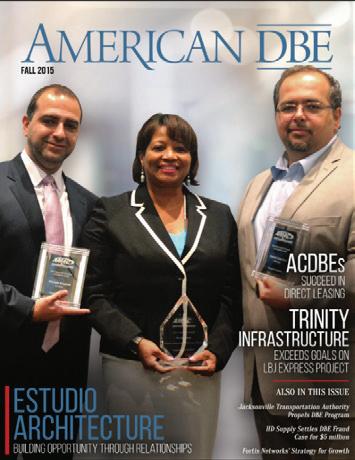
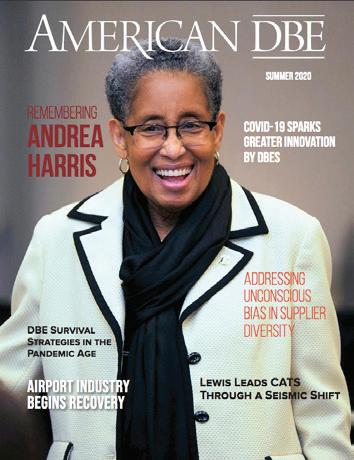



economic opportunities, and relying more on these networks to succeed, particularly if affirmative action is ruled unconstitutional by the Supreme Court.
To guarantee that the government is not a passive observer or an active player in private discrimination schemes, we believe the non-discrimination method is essential to document the situations in which minorities and women are being actively discriminated against. We also believe that this examination has an antitrust component. According to the numerous disparity studies that have been conducted over the years, it appears that general contractors, who are predominately white, conspire to keep minorities and women out of the more lucrative opportunities that exist in the various industries in the majority of states. Hence, we recommend looking at how we can attack those situations. New measures should include outreach programs since failing to reach out is essentially inviting discrimination. Governments must maintain contract compliance and supportive services programs. We are anticipating a ruling from the Supreme Court in June that may affect everyone who manages contract compliance programs across the nation. Discrimination based on race, gender, ethnicity, and other
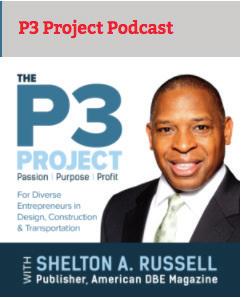
[1] City of Richmond v. J.A. Croson, 488 U.S. 469 (1989),
[2] Dred Scott v. Sanford, 60 U.S. 393 (1857
[3] Plessy v. Ferguson 163 U.S. 537 (1896),
[4] Brown v. Board of Education of Topeka 347 U.S. 483 (1954)
[5] Dobbs v. Jackson Women’s Health Organization, No.19-1392, 597 U.S. (2022).
[6] Roe v. Wade, 410 U.S. 113 (1973),
[7] Grutter v. Bollinger, 539 U.S. 306 (2003),
[8] Kligor, Ed. October 5, 2022. “Justice Jackson’s Originalist Case for Racial Equality.” New York Magazine. https://nymag.com/intelligencer/2022/10/ketanji-brownjackson-oral-arguments-racial-equality.html
immutable characteristics continues to exist. Those who are committed to equity must remain committed to the struggle to ensure that as long as the evil of discrimination menaces American society a way is found, under law, to ensure justice and equal business opportunity.











400+ Firms mentored by Austin have received contracts exceeding $3 billion.
Austin Commercial is committed to recognizing, embracing, and supporting workplace diversity. As a construction industry leader, Austin takes pride in creating minority economic opportunities.
www.austin-ind.com

Sheridan Mordue didn’t know her choice of the name
Hip & Humble would become more than a memorable and catchy title when she launched the company in 1999, but instead would become a recipe for success. Mordue was only 24 years old and a brand-new graduate of the University of Utah when she and her sister opened a high-end furniture store in Salt Lake City, Utah selling items like armoires, beds, bedding, and other home furnishings. Since those beginning times, the store has evolved through four business cycles, including the September 11 terrorist attacks in 2001, the Great Recession of 2008-2009, and the COVID-19 pandemic, to become a thriving brand specializing in giftables, pickups, and other products tailored to the female gender.


The brand has grown from a single location in Salt Lake City to now having three locations in streetside locations in the Salt Lake City area, two locations in the Salt Lake City International Airport, a new location in the Ft . Lau derdale -Ho llyw ood Intern atio nal airport in Florida, and in the planning stages for a location in Houston’s George Bush International Airport to open in 2026.
Hip & Humble has expanded over the years by being just that – Hip & Humble. The company’s hipness helps Mordue keep the business current with the times, market conditions and changing customer tastes; while staying humble helps Mordue embrace feedback from her customers, mangement team and business partners. The ability to stay humble also helped the company to expand into the airport market through a strategic partnership with a company already having expertise in the airport concessions industry; allowing the company to leverage their partner’s experience to quickly get up-to-speed in the new market segment. “I’ve been through a lot of iterations of the business for sure I consider myself lucky, to have had the insight or foresight to accept change because it kept us in business,” Mordue said.
Hip & Humble stays cool and with the times by embracing new opportunities as they appear. This first happened a few years after the business opened after the 9/11 terrorist attacts. Mordue noticed smaller household items were selling faster than large pieces of furniture The realization was further solidified when a good friend asked Mordue to sell her jewelry items out of the Hip & Humble store. “I noticed that after a few days, I needed to call my friend to ask her to bring some more jewelry because it was all gone. I started thinking and added small items like soaps, women’s clutches, and other pickups to what we sold,” Mordue said. This experience helped shape Mordue’s business philosophy. She realized while having a plan for the business is a great thing, staying in business requires understanding that sometimes customers need something different from what the plan says. Being able, as a small business, to let go of your company, in the sense of letting it be what your customers need it to be is even more
important that having a great business plan,” Mordue said.
The C O VI D-19 p andemic of 20 20-20 2 1 provided a greater opportunity for Mordue to exercise her ability to stay hip during an extremely challenging time for retail and airport businesses across the globe Like all retailers, Mordue thought that the pandemic would be the end of her business but quickly realized that a strategic move to invest in the Hip & Humble e-commerce platform in early 2020 would help the business survive.
Mordue already recogniz ed c ustomers’ increasing desire to shop online and made significant investments in improving the company’s online shopping experience. The decision put the business ahead of other retailers when the pandemic forced retail outlets to shut down in March 2020. Hip & Humble pivoted quickly to online sal es throug h the www.HipandH umbl e. com website, offering product deliv ery and an easy and efficient online shopping experience while other retailers were playing catch-up “We took the concept of delivering flowers into delivering gifts. It worked really well for us, and we did well even during t h e p a n de m i c , ” M o rd u e said.
Staying hip and open to new opportunities helped Mordue make the biggest transition of her c areer when presented with the opportunit y t o open a store in the new Salt Lake City International Airport in 2 0 20 She h ad n e v er considered moving into the


said. The partners opened the first Hip & Humble in 2020 and opened a second store in Terminal B in 2021.

The success of two locations in the Salt Lake City Airport has empowered Mordue to expand her airport presence outside of Utah. Hip & Humble opened a store in the Fort Lauderdale-Hollywood International Airport in 2022 and will open a location at Houston’s George Bush Intercontinental Airport in 2026. These new locations make Hip & Humble a national brand and have led to greater recognition by customers in the Salt Lake City region. “Now that we are in the airport and growing into a national brand, it has given us more legitimacy with our existing customers. People pass through the airport and see our store and then come to shop at our local store as well,” Mordue said.
The airport locations have also increased e-commerce sales as customers see items in the store while traveling and then decide to purchase the item later online Mordue says it has been an interesting play between the airport locations, the street locations, and sales through the company’s website. Customers who visit the store in the airport, will later visit the street location or visit the website to purchase other items. She also is noticing a dynamic mixture of shopping tastes as some people have become accustomed to shopping online, while others prefer visiting the store in person. “The traffic in our stores has increased, but we are also shipping all over and also expanding our local deliveries as well,” Mordue said.
Despite the success, Mordue is st aying humble by recognizing that it will continue to require hard work and a team approach to succeed. She is focusing on continuing to build a strong partnership with Paradies and on improving her leadership skills to better empower her management team to thrive as the company expands. “You would have to be crazy to want to do this alone. There is
so much to know, and you have to come up to speed so fast. Being in the airport is not a guarantee of success,” she said.
Mordue is excited about the prospects for Hip & Humble as more people become exposed to the brand through its airport locations and expanded website presence. She plans to continue to seek new airport opportunities
as well as opportunities for streetside stores. Mordue said, “I am really humbled by the fact that people like our store. I am loving the trajectory we are on and having so much fun. The airport business has been a riot for me We no longer have to justify our existence. We are a national brand.”

C olette Holt & A ssociates provides legal counsel and consulting ser vices to governments and businesses.


Co l e t te H o l t & A s s o c i ate s i s a f i r m o f n at i o n a l l y re co g n i ze d ex p e r t s i n co n d u c t i n g d i s p a r i t y s t u d i e s a n d d e s i g n i n g, i m p l e m e n t i n g a n d d e f e n d i n g s u c c e s s f u l a f f i r m at i ve a c t i o n p ro g r a m s.
• Minority / Women / Disadvantaged Business Programs

• Affirmative Ac tion and Compliance Consulting and Training
• Disparity and Availability Studies

• Speaking and Presentation Ser vices
• Exper t Witness Ser vices
• General Counsel to Americ an Contrac t Compliance Association

Awards More Than $500 Million in Contracts to Small Businesses
The Hampton Roads Bridge-Tunnel (HRBT) Expansion Project recently achieved a milestone by awarding a cumulative total of more than $500 million in contracts to Virginia-certified Disadvantaged Business Enterprises (DBE) and Small, Women, and Minority (SWaM) vendors working on the project.

“Our project team is extremely proud of its DBE and SWaM vendor contributions, and we thank the efforts and collaboration of VDOT’s Civil Rights Division, including Ms. Queen Crittendon, VDOT’s Hampton Roads District Civil Rights Manager, on reaching this historic milestone” says Juan Miguel Pérez, HRBT Expansion Project Executive for Hampton Roads Connector Partners, the design-build contractor of the HRBT Expansion Project.
The HRBT Expansion Project is making a significant impact on the Hampton Roads community and beyond by providing careeradvancing opportunities to thousands of women and men. The HRBT Expansion Project has a minority workforce participation of 57%, exceeding the contract goal of 27.1%.
This contract achievement moves the HRBT Expansion Project closer to meeting its 12% DBE and 20% SWaM participation goals. Specifically, since initiation in 2019, the project has awarded 326 DBE and SWaM agreements valued at over $501.4 million to Virginia-certified DBE and SWaM businesses.
Rod Busters, Inc. and Majk Steel, Inc., two DBE-cer tified rebar furnish and installation companies, have formed a joint venture (JV ), United Steel, to handle most of the rebar work for the HRBT Expansion Project
$5
OVER $5 MI ION AWARDED
To Virginia Disadvantaged Business Enterprise (DBE ) and Small, Women and Minorit y (SWaM) Firms since April 2019.

Project decision-makers often seek the recommendations and input from United when making critical design and construction decisions, giving the first-of-its-kind JV a unique value-add compared to a traditional rebar installer.


Established in 2013 by Pedro Astudillo, RBA Engineering strives to be one of the construction industr y’s safest, highest per forming and customer focused engineering and construction companies in the mid -Atlantic region. That commitment has been consistently the case with the firm’s Gravity Wall construction on the HRBT Expansion Project


Geotechnical Innovation, PLLC

Geotechnical Innovation (GTi) provides professional evaluations and civil engineering consulting ser vices. GTi is working with the HDR /Mott McDonald design team to provide soil index testing and coring ser vices for deep soil mixing for the HRCP Expansion Project. The work involves taking core samples of cement and soil mixtures used to strengthen the ground where the tunnelling machine will excavate the new tunnel.
Hampton Roads Connector Partners Joint Venture (HRCP) is a Construction Joint Venture of Dragados USA, Vinci Construction, Flatiron Constructors and Dodin Campenon Bernard HRCP is an Equal Opportunity Employer
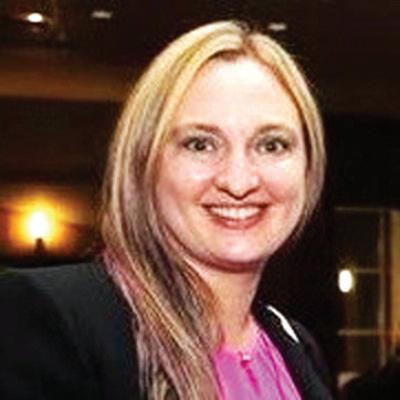



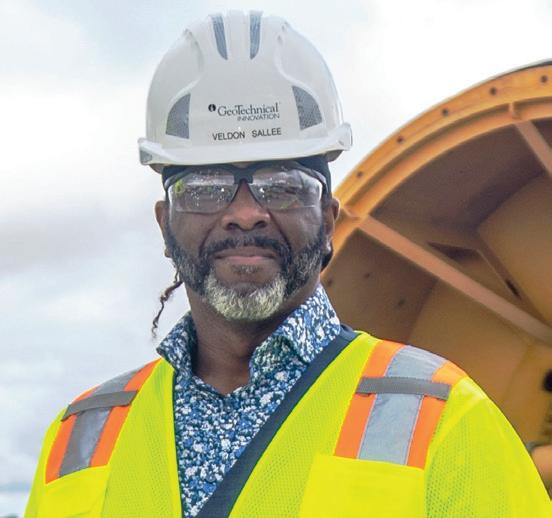







(MAA) in Alabama broke ground on a new airport terminal near Downtown Mobile in the fall of 2022. The project will improve airline travel to the region by moving the passenger terminal much closer to the city. The new facility will also have expanded amenities including an adjacent covered parking facility with access to car rental services, and additional concessions services for visitors to the airport. The $330 million project also creates an economic spark in the region and an opportunity for diverse firms to participate in a critical infrastructure project. The first phase of the terminal consists of a five-gate facility. However, the airport’s master plan includes an eventual 12-gate international terminal fully developed as demand continues to grow in the region.

The Mobile International Airport project has taken several years to come together, but Airport President Chris Curry believes now is the right time for the project to happen. MAA successfully gathered support from the City of Mobile, the County of Mobile, and the Federal Aviation Administration to secure the funding to build this phase of the project without the use of any debt. Curry believes building a debt-free facility provides the airport a competitive edge in attracting new routes from existing airlines and increases the potential of ultimately attracting other airlines to offer service to the airport.
Delta Airlines, United Airlines, and American Airlines currently provide service to Mobile from the Mobile Regional Airport, located 25 miles from downtown Mobile but the new terminal is just five miles from the center of the city and is an easier location to access for travelers. Curry believes easier access to the terminal for travelers will ultimately reduce the number of people from the Mobile Metropolitan Area that chose to travel to other airports for air service due to cost and convenience.
MAA recognizes the project offers a significant opportunity for design and construction firms in the region and is ensuring that DBE firms have the maximum opportunity to participate in the benefits the project will generate. The authority established a 5% goal for the design portion of the project and established a 10.74% goal for the construction activities. The two goals are in line to help the agency reach its overall DBE goal of 10.74% for the 2023-2025 federal fiscal years.
The Authority recruited Rita Barren in November 2022 as its first professional employee with day-to-day responsibility for leading the MAA DBE Program in preparation for the new terminal project. Barren hit the ground running and immediately
began working on updating the authority’s DBE Program Plan and DBE Goal Setting Methodology for Federal Aviaton Authority approval. These initiatives were completed in late 2022 and she is now focusing on increasing outreach activities and education programs for DBE firms to prepare them for opportunities on the new terminal project that will ramp up in the summer of 2023.
Barren also engaged the support of a DBE program consultant to help guide the agency through the goal-setting process. This DBE firm, Ken Weeden & Associates, Inc. will stay on board to continue to assist the airport on the new terminal project, providing community engagement, subcontractor outreach, and educational workshops aimed at increasing awareness in the community and identifying new businesses to pursue opportunities on the new terminal project. “There is a lot of interest and excitement in
the business community for this project and we want to make sure we give businesses all the information they need to be successful with getting work on this project,” Barren said.

MAA selected a design team consisting of HOK, Inc. and FSB Architects & Engineers
as the lead designer for the new terminal. The design team also includes Gant Group & Associates, a local architecture firm that is a certified DBE in Alabama. Gant Group & Associates is providing quality control support to the design team including services such as design review, code review, specifications review, and construction administration. Managing Partner Carlos Gant believes this opportunity provides his fouryear-old firm valuable experience in the airport industry that he hopes will lead to more airport projects in the future. “This project helps us grow experience in an area we didn’t have, and allows us to build a lasting relationship with a larger architecture firm that can last into the future,” Gant said.
MAA is finalizing a construction manager at risk (CMAR) contract with JESCO, Inc. who is teamed with Yates Construction, Kiewit, Dortch Figures and Sons, Inc., and Rogers & Willard, Inc. to build the first phase of the terminal. Dortch Figures & Sons (DFS) is another Mobile-based DBE firm that will lead the construction of the new parking garage. The parking garage is the latest and largest project for DFS at the airport after winning their first project with the authority in 2018.

DFS’ CEO Rashawn Figures recognized the potential business opportunities the airport could provide and scheduled a meeting with Airport President Curry in 2018 to find out how his company could get involved. Figures followed Curry’s guidance and quickly won a roofing contract at the airport. Since then, DFS has steadily taken on larger projects leading to the opportunity to participate as a member of the CMAR team on the new terminal. “The airport has enabled us to scale and to grow a resume in airport projects. We knew we could do the work, but it was hard to break into this space. Chris Curry was the critical force to help us break through and now we work as several airports across Alabama,” Figures said.
These two DBE opportunities fit the vision Curry has for this historic project. He believes the project will create a lasting economic impact on the entire region and provide the opportunity for small and diverse businesses to grow to new levels. “We want to build a facility that represents our region in a positive way, that supports Mobile and Baldwin Counties and is something everyone can be proud of; that will also allow all types of businesses to have a part of the benefit that comes with building this new facility,” Curry said.
Curry says the design of the project is well underway and expects 60% completion by the fall of 2023. Preliminary construction activities are also underway to prepare for the construction of the new terminal to ramp up in the fall as well. MAA’s plan as the terminal moves toward completion is to create a concessions program that highlights the Mobile, Alabama region and offers opportunities for local businesses to operate in the airport. Curry said, “We want the facility to have a sense of place, so we are very conscious of putting a local flavor in the airport.”
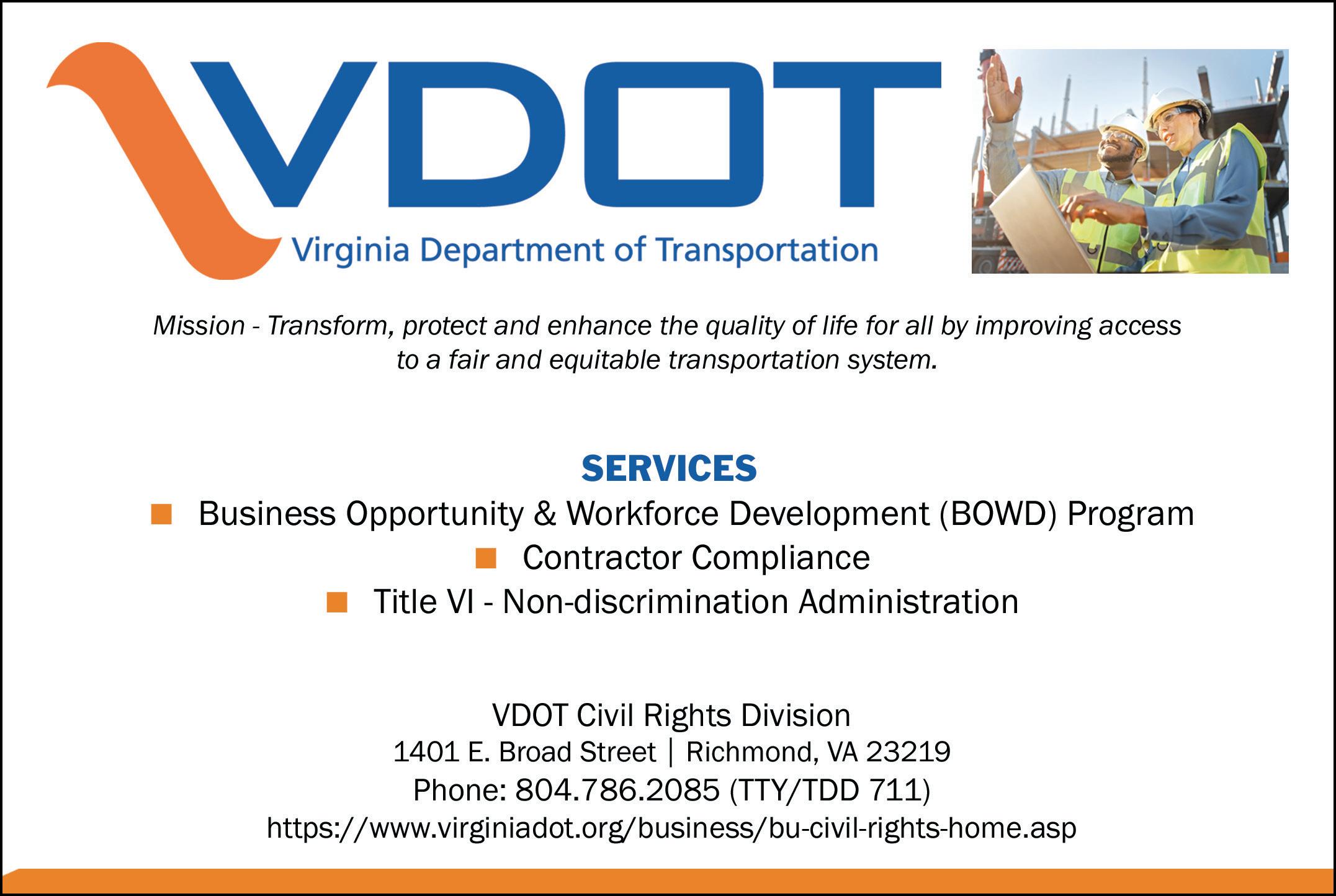













Hugh Blackwell saw the writing on the wall. The writing said maximizing his potential and controlling his destiny would require creating his own company. By this time he had built a solid career in the electrical distribution industry working for major corporations and come to realize his vision surpassed the internal politics and bureaucracy of a large organization, and his next step required the autonomy of striking out on his own.
Blackwell launched Blackstar Diversified Enterprises, LLC (BDE) in 2016 committed to creating his own entrepreneurial story and following in the footsteps of his father and stepfather, who were business owners as well. The company name is derived from Marcus Garvey, a historical figure famous for incorporating the Black Star Line in 1919 with the commitment to building economic empowerment and self-determination for people of African descent.
BDE is a minority-owned, small businesscertified electrical distribution and traffic



control systems integrator that conducts business in Maryland, Washington, D.C. (and the surrounding metro area), Virginia, Louisiana, Texas and Mississippi. The company provides sales and services for the electrical distribution and traffic safety and control industries. Blackwell founded the company in the Metropolitan Washington D.C. area but moved its headquarters to the New Orleans, Louisiana area in 2018. BDE operates a manufacturing facility in New Orleans where the company fabricates, assembles, and prepares the equipment for its clients.
Blackwell launched BDE after transitioning from another small company. His former employer was in the process of moving out of the highly competitive electrical distribution supply industry sector. This move allowed Blackwell to maintain some of his existing clients without the concern of a non-compete agreement. Although these relationships
gave BDE the start it needed, Blackwell also knew this business segment was not the most profitable in the industry. “It was the low-hanging fruit, and it is low-hanging for a reason. It’s difficult, entails working with difficult customers and requires a significant amount of engineering, project management and customer care,” Blackwell said.
However, the initial clients allowed BDE to survive the early years in business and begin to expand its customer base to build a stable operation, positioned to grow in the future. Blackwell knew that growing the business would depend on finding innovative ways to meet customer needs to distinguish the company from other competitors. In
this effort, he drew inspiration from two other black innovators in the electrical area – Lewis Latimer and Granville T. Woods. Latimer’s many inventions included an improved process for manufacturing carbon filaments for light bulbs, and Woods’ inventions included creating the Synchronous Multiplex Railway Telegraph which allowed communications between train stations from moving trains. “When I think of these two black history figures I remember a quote that said inventions come from a long line of innovation, and I keep that in mind as we look at ways of serving our customers,” Blackwell said.
BDE continues to expand its list of industrial and government clients and continues to look for new markets that align with the company’s capabilities. This innovative approach paid off when Operations Manager Chad Risher attended a conference sponsored by the American Traffic Safety Services Association (ATTSA) and learned about opportunities to supply traffic controls and safety equipment
on transportation projects. Blackwell and his team followed up on this opportunity and subsequently won its first contracts to supply traffic signaling and safety equipment to clients like the Virginia Department of Transportation for the Hampton Roads Bridge Tunnel Project; and the Louisiana Department of Transportation and Development.

BDE gained exposure to the Hampton Roads Connector Partners project team while supplying twelve skidded electrical transformers to a major subcontractor on the project. After delivering the transformers with excellent timeliness and quality, the company received another opportunity to bid on supplying traffic barriers to help divert and manage traffic during the project’s construction.
Hampton Roads Connector Partners DBE Program Manager Malcolm Kates praised BDE for their performance on the project and said, “BDE has been reliable, resourceful, and professional on the project. They have been great to work with.” Blackwell strives to make sure all BDE customers have the same experience with the company. “Professionalism is one thing we can completely control. We may not be the biggest or have the best systems, but we can be professional, be on time, be responsive to our customers’ needs, and fix problems when they arise,” Blackwell said.
Much of the company’s growth comes from building strong relationships with its customers and carving out a niche that distinguishes BDE from competitors. Blackwell believes this approach is extremely important in Louisiana due to the market’s smaller size compared to the Metro D.C. area. “We’ve had to spend time getting to know people here in Louisiana. That is important here, but once you get to know people, it’s a pretty clear path to success, as long as you work hard and bring your

hard hat and lunch pail to work every day,” Blackwell said. This approach is working as BDE has grown its customer base to include working on major projects for Greater New Orleans, Inc., Sewerage and Water Board of New Orleans, New Orleans DPW, Jefferson Parish DPW, and several other local and state government agencies.
As BDE continues to build its reputation and experience with major clients, the company is increasing its ability to add value by growing its project integration and project management services. These services expand the company’s innovative expertise in finding


new solutions to complex issues in the electric distribution and traffic controls and safety industries. It also allows the company to provide a one-stop shop for its client’s needs, which is more important as the company grows with its customer base to projects across the country and around the world.









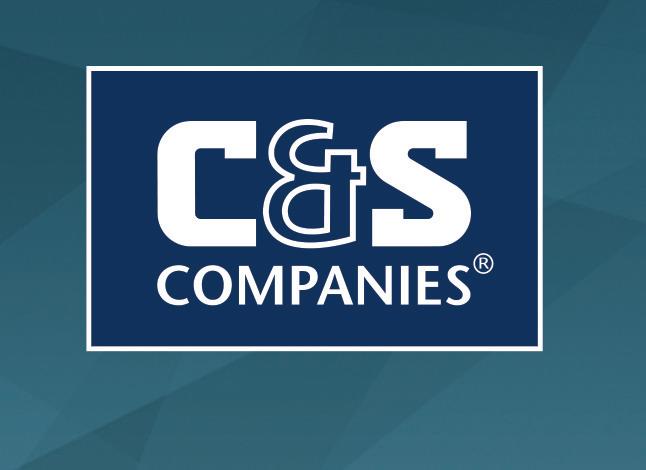




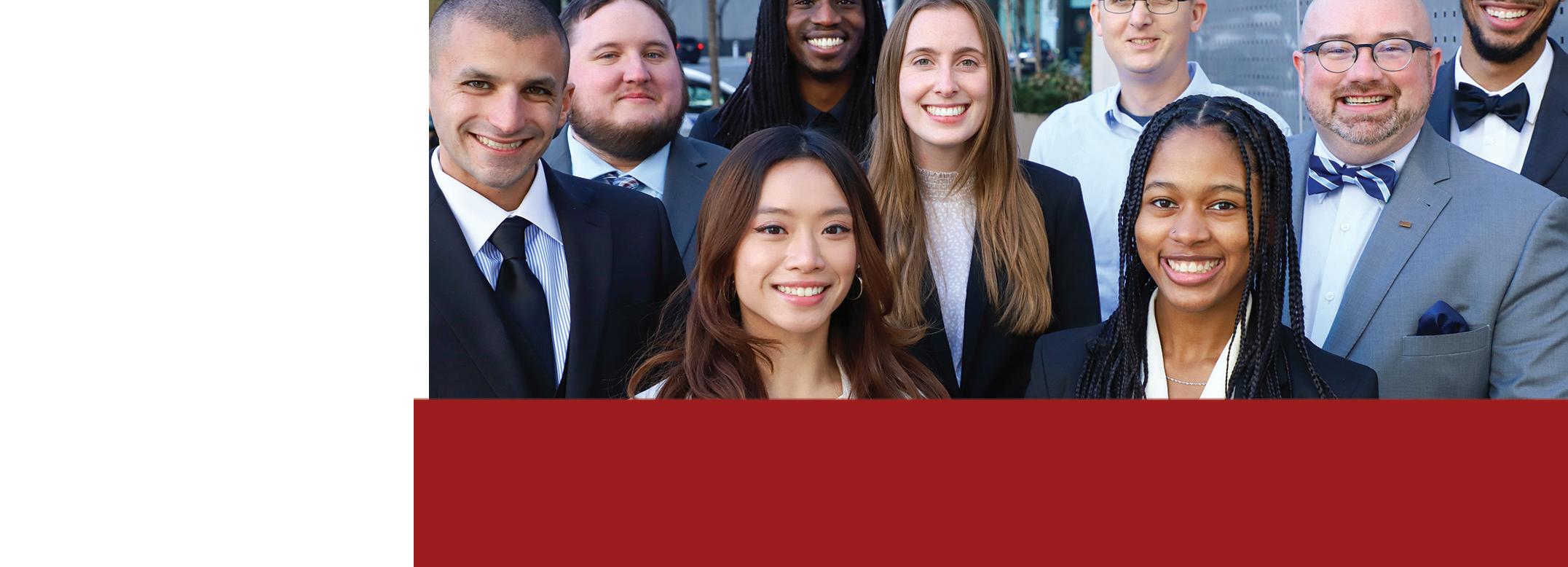


Blackwell sees greater potential for the company to expand into the renewable energy market on wind-related projects, and into the hydrogen fuel industry. He also sees an opportunity to expand BDE’s current products and services to clients in different industries. “For instance, we can look at a product that Back River Wastewater Treatment Plant uses in its operation and utilize this knowledge to provide equipment fora similar application at a naval base in Norfolk, Virginia,” Blackwell said.
Blackwell attributes his business success to the values his mother instilled in him during his youth. He remembers his early days of mowing grass for his neighbors and his mother never allowing him to give anything less than his best effort. He said, “I get my work ethic from her. I was taught to stand by my work and to never cut corners. Now, sometimes this can be burdensome, but it’s me. That’s how I want to be remembered by those that I work alongside.”

Attention Contractors & Consultants
Meet Short-listed Red Line Extension Primes
June 8, 2023
9am – 12:00pm
CTA Headquarters
567 West Lake Street, Chicago, IL 60661
2nd FL Conference Rooms A,B,C
Registration: https://bit.ly/3LxUq4R
July 18, 2023
10am – 12:00pm
Olive Harvey College
10001 S Woodlawn Ave, Chicago, IL 60628
Registration: https://bit.ly/44XGLgr
The July event will focus on professional services opportunities
The Chicago Transit Authority (CTA) is extending the Red Line from the existing terminal at 95th/Dan Ryan to 130th Street. The 5.6-mile extension will include four new stations with multimodal connections at each station to include bus, bike, pedestrian, and park & ride facilities. Come out to meet potential primes and begin building business relationships for opportunities on this mega-project.

For information on the many opportunities to come, visit: https://transitchicago.bonfirehub.com/portal/?tab=openOpportunities


https://www.transitchicago.com/rle/

June 10-14, 2023

JW Marriott San Antonio Hill Country Resort & Spa

• Airport Directors 20/20 Forum
• DBE/ACDBE Certification Training
• Aviation, Airport and Transportation Executives
• Aviation, Airport and Transportation Emerging Leaders
• Industry Consultants and Engineers
• Marketing and Business Professionals

• Concessions and Revenue Team Members
• Project Managers and Change Agents
• AMAC Catalyst Awards
• Exhibit Expo
• AMAC Foundation Celebrating Women in Aviation Breakfast
• Business Matchmaking
• AMAC Foundation Bill Walker Memorial Golf Tournament
• AMAC Foundation Scholarship Awards
• Workshops & Industry Updates
• Networking Receptions
• AMAC Foundation Silent Auction
...AND MUCH MORE!

history, the $9.5 billion, 2.4-million square feet New Terminal One being constructed at JFK International Airport. The terminal is slated to anchor the south side of JFK and create at least 10,000 jobs, including 6,000 union construction jobs. New Terminal One will be the largest terminal at JFK and represents an integral part of the $18 billion Transformation Project that is well underway. The project will double the number of gates that currently accommodate wide-body aircraft, with 22 of the 23 new gates designed for larger aircraft that are key to international travel.
McKissack & McKissack has been in business for more than 118 years and is the oldest, minority professional design and construction firm in the United States. The company was founded in Nashville, Tennessee by current President & CEO Cheryl McKissack Daniel’s great, great grandfather and was headquartered in Nashville until McKissack moved the headquarters to New York City in the 1980s. Since the move, the company has created its own legacy in New York City, which includes planning, design and construction of more than 6,000 projects. Among them are the Billie Jean King National Tennis Center; Harlem Hospital Center Major Modernization Program Phases 1, 2 and 4; multiple projects at Columbia University; the Studio Museum of Harlem; the New York City Economic Development Corporation Rockaway Boardwalk Reconstruction; and
PANYNJ (Port Authority of New York and New Jersey) LaGuardia Airport Central Terminal Building Replacement.
As the company expanded to assume larger roles on projects in the New York City region, it has also been called upon to create opportunities for smaller minorityand women-owned companies along the way. Today, the firm often secures the role of managing inclusion efforts to create opportunities for diverse firms on major projects. Recently, McKissack was a lead construction manager on the Coney Island Hospital Project, which had a focus on local participation as well as on Minority and Women Business Enterprises. McKissack led the participation efforts and exceeded all diversity targets on the project.
McKissack is now part of the program management team for one of the largest infrastructure projects in New York City
PANYNJ selected Ferrovial, a global airport operator with experience building airport terminals, as the project’s lead investor. Ferrovial also leads the Capital Project Delivery team responsible for bringing the terminal to completion. A press release from PANYNJ said Ferrovial and its partners at the New Terminal One “are also committed to the Port Authority goal of 30 percent participation by Minority- and Women-Owned Businesses (MWBEs) and a strong focus on developing local businesses.” McKissack is a member of the Capital Project Delivery team’s Project Management Office and will play a key role in completing the project successfully. One of the roles is to administer inclusion efforts for minority- and women-owned firms aimed at meeting or exceeding PANYNJ’s project goal.
Kimberly D. Hardy, Esq., senior vice president of Diversity, Equity, Inclusion and Compliance believes McKissack’s work on the New Terminal One is significant on many levels. “Our work for the New Terminal One at JFK is providing McKissack a lead role in the project management office that goes beyond diversity,” Hardy said. “In my role as the diversity and community engagement director, we have the opportunity to assist the
New Terminal One with having meaningful impact in the community surrounding JFK Airport and also nationwide, as we seek to help hire companies needed to support not only a construction project but eventually the operation of an airport terminal.”

McKissack will support the project by engaging and developing initiatives that will benefit the broader community through education, workforce development, business development and environmental stewardship. These efforts fall in line with the overall JFK Airport Redevelopment Program and are fully embraced by the Ferrovial development team.
Hardy said it is rewarding to work for a Black-woman owned company with a 100year history. “McKissack is a perfect example of the power of perseverance, in terms of having a multi-generational, family-owned business that has thrived in New York City.” She believes McKissack’s work is significant because it’s important for people and the business community to recognize that there are diverse firms, Black-owned companies that can thrive in all industries in professional services, particularly in construction.


McKissack’s formula for having a successful diversity program means being very intentional in the way it conducts outreach and in the way it monitors and tracks the progress of participation by MWBEs with whom they contract. For example, through their work on the New Terminal One Project, for which a groundbreaking ceremony was held in September 2022, McKissack has assisted the MPO (metropolitan planning organization) with engaging more than 200 MWBE firms. “That type of impact is meaningful and impactful and helps build the
capacity of minority-owned firms,” Hardy said. While many companies and organizations have placed more emphasis on diversity, equity and inclusion following the pandemic and the killing of George Floyd by Minneapolis police officers, McKissack has long made diversity a core component of the company’s business model. In 30 years of performing contracts in the New York City region, the company has built its reputation with public and private client on completing work on time, within budget, having a diverse group of companies working on projects.
“McKissack, promotes diversity not only for construction trades but also for professional services to ensure the projects they’re working on are engaging diverse firms, and might I add certainly Black firms,” Hardy said, who supervises about 10 people at McKissack. “As a Black company, it’s very important to us to promote other emerging Black businesses. I would say, in the last two years, we have seen a number of clients more focused on ensuring not only that there is diversity, particularly in the Minority and Women Business Enterprise community, but that there’s very much a focus on ensuring Black businesses are a focus on the overall MWBE presence on projects.”
McKissack works with clients to help them develop strategic plans on how to achieve diversity, whether it’s in their workforce or with regards to their suppliers and other professionals. The firm also works on projects – most notably construction projects – to help recruit MWBE businesses, to track their participation, to ensure payments are made to those businesses and to achieve additional diversity business objectives they have. For instance, although there is a strong focus on
MWBEs, other targeted efforts for inclusion are disabled veterans, veterans’ businesses and local businesses.
The New Terminal One is expected to open in 2026 and become the new gateway for international travelers entering New York City. McKissack that all segments of the New York City demographic profile play a significant role in building the gateway and participating in the economic growth the gateway will bring.
mmanuella Myrthil joined the Southeastern Pennsylvania Transportation Authority (SEPTA) as its first chief equity and inclusion officer in December 2022. Myrthil’s role assumes responsibility for continuing to build and cultivate a culture within SEPTA that promotes inclusion, diversity, equity, and access for employees, customers, vendors, contractors, and diverse communities.

Myrthil will provide the vision, leadership, and direction for SEPTA’s diversity and equity programs, including the Diversity, Equity, and Belonging (DEB) strategy and Disadvantaged Business Enterprise (DBE) programs. She will also provide counsel and guidance to the SEPTA Board and management team, and report on SEPTA’s equal opportunity compliance and equityrelated statistics both to them and outside regulatory agencies.
As a member of SEPTA’s senior management team, Myrthil reports directly to General Manager and CEO Leslie Richards. “I am extremely proud of SEPTA’s diversity, equity, and inclusion efforts. I am excited that Emmanuella will continue to build on that foundation to further strengthen SEPTA as an organization that is diverse, inclusive, and enables all people to get opportunities,” Richards said.
Myrthil comes to SEPTA from HNTB, a national infrastructure engineering and design firm, where she served as Division Diversity Director for the company’s Southeast Division. At HNTB, Myrthil worked to change business-as-usual practices to remove barriers and expand access for minority businesses, as well as diversify small business participation in transportation projects throughout the Southeast. she piloted an Inclusion, Diversity, Equity, and Allyship program at the company to create greater cultural effectiveness, shared learning, and increased engagement; and implemented a social responsibility employee resource group and adoption program to support Atlanta’s Thomasville Heights Elementary School community.
Myrthil has more than 18 years of experience in the transportation industry. Before her tenure at HNTB, she was the DBE
manager for the Georgia Department of Transportation. She has also been active in the Conference of Minority Transportation Officials (COMTO), Women’s Transportation Seminar (WTS), the American Public Transportation Association (APTA), The American Council of Engineering Companies (ACEC), and was named Engineering Georgia’s 100 Top Influential Women in 2021 and 2022.
Myrthil joined SEPTA soon after CEO Richards led SEPTA to become one of the first agencies to sign the Equity in Infrastructure Pledge (EIP), committing to create more contracting opportunities for historically underutilized businesses (HUBs). The EIP was created in April 2022 to improve public contracting practices
by creating more opportunities for HUBs to build generational wealth and reduce the racial wealth gap. The agency joins a growing list of other infrastructure agencies that have signed the pledge.
“Who we contract with has always mattered in our efforts to advance equity. At this moment, we have a once-in-a-lifetime opportunity to create generational wealth for small, minority, and women-owned firms in the infrastructure space,” said SEPTA General Manager and CEO Leslie S. Richards in a press release. “SEPTA is not only committed, but we’re also excited to take this Pledge.”
An early result seeking more opportunities for HUBs led to SEPTA and the Chicago Transit Authority signing a memorandum
of understanding agreement to allow both organizations to recognize each other’s certified Small Business Enterprises (SBEs). CEOs from both agencies signed the agreement in Washington, D.C. in January 2023, and the partnership begins immediately.

Myrthil says that the goal of this MOU is to move toward broader reciprocity throughout the states. Currently, businesses must go through a lengthy process that changes from state to state. Hopefully, the MOU will be the first of many such agreements that will eventually help to create a national database. “We hope that it sets the tone for the country,” says Myrthil.
Myrthil’s role also focuses on increasing equity in SEPTA’s workforce and in how the agency interacts with the larger Greater Philadelphia community. She knows this is a significant task requiring a strategic approach for completion. “My first responsibility is to listen, not talk. I want to get the temperature of the employees —how do they experience culture,” Myrthil says. She feels what attracted her most to the position is the ability to work with both employees and small businesses to affect positive change across the entire organization. One of her first goals is to visit all the SEPTA offices to meet as many employees as possible.
Myrthil says that she is not charging in with new ideas. “I am taking the time to listen and discover,” she says. “I want to shake hands with everyone involved and figure out how to embed equity into every part of the business. We want to create a type of culture that emphasizes inclusion. It’s important to look at our communities as a whole and see how equity can best serve them.”
SEPTA CEO Richards says Myrthil is the right person to lead the effort. “Her experience and values make her the ideal person to take on this new role and advance our commitment to creating a more trusting and culturally competent environment for our employees, our customers, and the communities we serve.”

Both projects will provide opportunities for diverse firms to play significant roles as LaDOTD focuses on greater equity in its contracting activities.
One of the primary accomplishments of Wilson’s tenure was the strengthening of the agency’s diversity programs for LaDOTD’s workforce and the business community. Diversity is critically important to Wilson, who was the only Black state department of transportation chief executive officer when he was appointed Louisiana’s Secretary in 2016. He said that fact, coupled with what he witnessed in the ten years before his appointment, made him determined to ensure equitable representation in decisionmaking roles within the department.

During those years, Wilson was a member of the LaDOTD executive staff and later served as chief of staff before being selected to lead the agency. After assuming the secretary position, Wilson established a Diversity Advisory Council composed of the executive staff and section heads. He insisted that the department’s efforts were representative, intentional, and sustainable. The council adopted a charter and developed its first set of objectives on which to focus and systematically address. Those objectives, which included ensuring hiring panels were reflective of the department’s diverse workforce, training to select and hire the best candidates, and examining data and statistics to achieve inclusiveness, were completed in the last quarter of 2022. Advisory council members are currently developing a new set of objectives.
had the opportunity to become global. In his memory, I’m diligent about educating our small and minority-owned businesses regarding the opportunities that are not only available to them, but available at no cost to them...”
For the LaDOTD to thrive in today’s global economy, it must have diversity, inclusion, and equity at all levels, Roddy said. “The survival and growth of any organization depends on mass appeal across all persons regardless of their differences. Inclusion will help us move forward and upward.”
A demonstration of Wilson’s commitment to diversity was leading the department to become one of the first state transportation agencies to sign the Equity in Infrastructure Project Pledge in October 2022. Since the signing, a LaDOTD steering committee has adopted a standardized approach to ensure pledge goals are incorporated systemwide. The committee is reviewing inclusion practices on the I-10 Widening and I-10 Calcasieu Bridge Project, as well as upcoming electric vehicle charging infrastructure opportunities through the Infrastructure Investment and Jobs Act, which will bring Louisiana approximately $73 million.
“As part of the DBE Outreach Plan, we present information on the National Electric Vehicle Infrastructure Program and encourage DBEs to partner with other DBE companies and prime contractors for participation on the installation of the charging stations and the program in general,” Roddy said.
During his seven-year tenure as Louisiana Department of Transportation & Development (LaDOTD) Secretary, Shawn Wilson led the way towards completing infrastructure improvements to enhance the quality of life for the citizens of his state. Although he retired in March 2023 to pursue a gubernatorial bid, he stepped down after paving the way for two transformational projects that will improve and impact the Pelican state for decades and make equity a hallmark of his administration.
The two projects are the I-10 Widening Project in Baton Rouge and the I-10 Calcasieu Bridge Project in Lake Charles. The I-10 Widening Project represents the largest and most complex project in the state’s history, while the I-10 Calcasieu River Bridge is a project that has been in the making for more than thirty years but is now set to begin.
Paula Merrick Roddy, LaDOTD compliance programs director, said the objectives are important because the department is “striving to be a more diverse, inclusive, and equitable organization.” Internally, she said, LaDOTD continues to be diverse, inclusive, and equitable in recruiting, hiring, and promotional opportunities while externally it continues including the public in decision-making that affects them and their communities while ensuring inclusivity among historically under-utilized businesses.
For Roddy, working to ensure diversity, inclusivity, and equity within the LaDOTD isn’t just her livelihood, it is personal. “I have a passion for this work, as my father was a minority business owner who did quite well; however, he was never aware of the vast array of programs that are available to small and minority businesses,” Roddy explained. “Had he known about these programs, his small business might have
Wilson said Louisiana residents will benefit from the state’s participation in the federal program, which provides funding to states to strategically deploy electric vehicle charging infrastructure and to establish an interconnected network to facilitate data collection, access, and reliability, according to the U.S. Department of Transportation. At least 50 percent of the grant funds – or a minimum of $36.5 million in Louisiana – must be used for a community grant program with priority for expanding access to EV charging and alternative fueling infrastructure within rural areas, low- and moderate-income neighborhoods, and communities with a low ratio of private parking spaces.
When the I-10 Widening Project is complete in 2028, the improvements will increase mobility in the Baton Rouge region by
expanding the interstate to four lanes in each direction, with two thru lanes coming off the I-10 Mississippi Bridge heading east, which will help the west Baton Rouge traffic and any other traffic coming from the west. There will be a new, wider, four-lane bridge over the city park lakes and a scenic bridge that will give Baton Rouge a “signature look.”
The I-10 Widening Project runs through the heart of the City of Baton Rouge and will improve areas that were previously negatively impacted by the construction of the highway. “The project is a critical corridor reconstruction of a segment of interstate that represents the dark days of design and construction for some and unintended consequences for others,” Wilson said. “This billion-dollar project will redevelop a diverse segment of the state’s capitol, from an evolving environmental justice community to a thriving commercial and entertainment district. This project not only represents excellence in design, construction methodology and innovative delivery, but it speaks to a new model for delivering infrastructure.”
The I-10 Widening project begins in the most-challenged stretch of the community and will add to the quality of life once finished, Wilson said, adding it connects the different segments within the corridor and builds on the natural existing environments.
Diverse businesses should also experience increased opportunities on the project which runs directly through a predominantly African American neighborhood. “More importantly, the project represents a new approach to inclusive contracting. The state created an aggressive Disadvantaged Business Enterprise (DBE) program within this singular project and is using a construction manager at risk contracting method, which allows the designer and contractor to work directly for the state under separate contracts with a cost estimator,” Wilson said. In this process, the team works collaboratively to design and construct the project to gain maximum value, and the contractor is required to work with local universities and trade schools to ensure a pipeline of workers from the community where the project’s being built.
LaDOTD selected the Kiewit/Boh Joint Venture team as the construction manager at risk for the project, with a DBE goal of fifteen percent on the construction activities. The project also has a seven percent DBE goal for the preliminary design activities. The Kiewit/Boh project website states that the anticipated construction costs for the project are $872 million.
For the Calcasieu Bridge Project, LaDOTD officials have amassed over $800 million and are completing the procurement for a publicprivate partnership. Wilson said the state “took extra care to minimize takings and ensure equitable policies with regards to the financial structure of the project,” efforts that have received national attention.

“The Calcasieu Bridge Project will reinforce tolling policy and introduce innovative finance like never before,” Wilson said. “Given the nature of the P3 procurement, we have incentivized local hire and labor engagement as thoroughly as possible. We have included language to ensure strong DBE participation in the construction phase and the maintenance phase of the concession, which is not to exceed 50 years. For projects of this magnitude, we must have aggressive goals for DBE participation or run the risk of not meeting state goals.”
As Wilson ended his successful tenure leading Louisiana to greater levels of inclusion across the agency, he was satisfied
with the strides LaDOTD has made. “I’m extremely proud of the work we’ve done over the past seven years, and the way we’ve done it is making a positive difference benefiting all of our citizens,” Wilson said. “The state is better off today with regards to our multimodal infrastructure and the

DBEs are encouraged to contact us to find out how to become a member of our team.
Contact dbeprocurement@ixbridgegroup.com to request Bid documents or get information
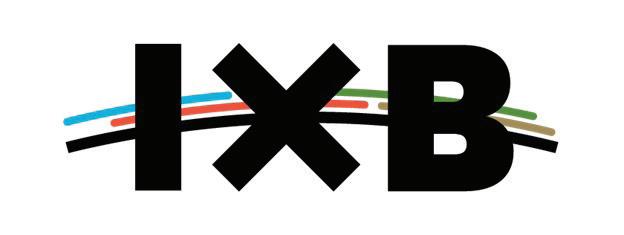
Halmar-Barnard DB Contractor JV is an Affirmative Action/Equal Opportunity Employer.

To learn more, scan the QR Code or visit www.ixbridgegroup.com/the -project
Newly Assigned to DBE/ DBELO or Certification Duties?
NEED TRAINING?
For you, a year-round professional development training opportunity.
ALL PHASES, ALL MODES—SINCE 1989
• DBE & ACDBE Program and Goal Methodologies
• Compliance Monitoring and Report Development
• DBE – ACDBE Certification Support
• Airport Concessions DBE Programs


• Joint Venture Agreements
• Disparity Studies – Anecdotal Data
• Staff Development and Training
• Training via the National DBE Institute

Clients Include:
• State Highway Departments
• State and Local Transit Agencies
• Airport Authorities and City Aviation Departments
www.kwaplanning.com
(888) 762-6296
P.O. Box 3113, Wilmington, NC 28406 kenneth-weeden@kwaplanning.com

WILMINGTON • RALEIGH • ATLANTA
“Better Professionals equals Better Programs”
Topics Include:
• Functional Understanding of DBE/ACDBE Programs
• Requirements for Program Admin Staff
• Goal Setting Methodologies and Program Monitoring
• Understanding Joint Ventures in ACDBEs
• Developing Outreach Programs
Please see our website for schedules and locations www.natdbe-ti.com
(888) 762-6296
nikki-Jefferies@kwaplanning.com
As a recipient of federal funding from USDOT and local revenue, Charlotte Area Transit System (CATS) has made it a priority to reinvest in the local economy. Through the Disadvantaged Business Enterprise (DBE) program, businesses can fairly compete for USDOT-assisted contracts and participate in CATS projects that help connect communities to places, people, and each other.
Since 2015, CATS has confirmed $7,260,053 in awards and commitments to USDOT federally certified DBEs including projects such as the LYNX Blue Line Extension and the CityLYNX Gold Line. DBE certification:
• Opens the door for smaller businesses to compete with larger companies for contracts



• Allows CATS to work alongside DBEs and promote economic growth in the region
• Helps DBEs compete in their current marketplace or transition to other areas of business
Public-private p artnerships (P3s) are ongoing agreements between government and private sector organizations in which the private organization participates in the decision-making and production of a public good or service that the public sector has traditionally provided and in which the private sector shares the risk of that production. P3s motivate the private sector’s ingenuity and efficiency, save lifecycle costs, have better schedule certainty than the traditional procurement model, and lock in long-term funding and commitment for operation and maintenance.
The U.S. Department of Transportation (USDOT) is one of the agencies that has significantly increased its use of P3 and continues to use it as a model to deliver its projects. Policymakers and transportation officials view P3 as an alternative method to supplement traditional funding sources to finance and deliver projects, especially given fiscal constraints on government projects.
The DBE program is a federal program that provides opportunities and development to minority and women-owned businesses working on public projects. All 50 states participate in the program. However, the implementation of the DBE program has been criticized in the past due to its perceived lack of strong language and goals in the contract. This may be especially relevant in P3 projects, given the unspecified nature of P3 contractual terms and the potential loss of accountability.
Notwithstanding, P3s offer an excellent vehicle to dispense transportation monies to small firms and bolster the economy
Examining 134 transportation contracts in the US revealed that P3 is associated with a higher DBE goal than the traditional procurement model and that the two procurement models
By Rita Ohaya and Kunqi Zhangare not different in terms of DBE attainment, i.e., the percentage of contract amount spent on DBEs at project completion. These positive findings brought impetus to the study of best practices for encouraging DBE compliance in the P3 environment.
Dr. Ohaya conducted a study that focused on the DBE compliance administrators’ perception of the DBE program’s inclusion i nto t h e P3 en vi ro n me nt a nd ho w th at influenc es DBE c omplianc e , thus, the accountability and increased social equity achieved by the contractors’ P3 projects. By collecting data from the FHWA compliance administrators, the study investigated the effects of the P3 model on DBE goals or good faith efforts, analyzed any strengths and weaknesses that may be made apparent b y the P 3 en vir onment , and deriv ed strategies to monitor compliance on P3 pro jec ts. Dr. O haya cond ucte d one -onone in-depth semistructured interviews with 2 4 p articip ants r esponsibl e f or monitoring the DBE program compliance on P3 projects. Ultimately, the study found various best practices expounded by the DBE administrators within the P3 sector (below).
1. Communication and Collaboration
• Collaboration with private partners
• Monthly meetings
• Communicate DBE requirements early, and often
The participants emphasized collaborating and communicating with the private partners more than expected on other project types. Some participants perceived that in the P3 environment, it is a best practice for the public partner to collaborate with private partners in implementing the DBE program. The participants offered monthly meetings and regular communication with the private partners regarding the DBE requirements.
• The project owner maintains compliance oversight
• The project owner maintains accountability
Half of the participants perceived the project owner responsible for DBE compliance oversight on P3 projects as a best practice. The participants perceived that the project owner has to be the principal and hold the private and public partners accountable for their DBE program roles and responsibilities on the P3 projects.
• Currently no difference in DBE goal setting
• One DBE goal
• Create separate DBE goals
• Different goal-setting process
• Private partner input
Although the majority of the participants reported using the same DBE goal-setting methodology on P3 projects as they did on other project types and identified only setting one DBE goal on its current DBE projects, half of the participants perceived that a best practice would be to set multiple DBE goals on P3 projects, specifically one for
design and another for construction. Some participants also perceived that the DBE goal-setting process on P3 projects should differ from other project types.
• DBE department’s early involvement
• Currently no difference in implementation
• DBE program should be applied differently
• Leadership commitment
• FHWA support
• Creative and innovative mechanisms
• Placement of the DBE department
An overwhelming number of participants emphasized that the DBE department must be involved in the planning phase of the P3 projects to set the appropriate precedent. Although the participants shared that there was currently no difference in the agency’s implementation of the DBE program on P3 projects, a significant number of participants perceived that it would be best for the DBE program to be applied differently on P3 projects. Especially with the private partner’s increased input, there should be an effort to create shared objectives. Many participants perceived leadership’s commitment and FHWA guidance or a collaborative revision of the DBE program on P3 projects as a best practice. The participants encouraged the use of creative and innovative mechanisms to encourage DBE compliance and further the objectives of the DBE program on the P3 projects. Many participants communicated that a best practice is to place the DBE department where it has support.
• The contract language contains consequences
• Strong enforcement languages and consequences
• Liquidated damages, financial penalty, or administrative sanction
• DBE contract deliverable
• Debarred from agency
A significant number of participants perceived that it would be a best practice for the DBE contracts to obtain strong DBE enforcement languages and consequences as it is more likely to yield compliance. The participants suggested that the DBE requirements be included in the contract as a deliverable as a best practice, so should there be non-compliance, it would be a
violation of the contract. The administrators recommended liquidated damage, financial penalty, and administrative sanction as noncompliance remedies. The participants perceived financial penalty as the most effective mechanism and best practice for enforcing the DBE program in the P3 environment. The participants also suggested the use of debarment to enforce the DBE program.

• Facilitate DBE P3 training
• Ongoing compliance reviews
• DBE plan
• DBE outreach
• DBE reports
• Evaluate historical influence
• Unbundle scope
• Develop solid goals and compliance mechanism
• Support the DBEs by facilitating relationships

The DBE administrators recommended facilitating DBE training and ongoing compliance reviews as a best practice for ensuring compliance in the P3 environment. A significant number of the participants repeatedly recommended requiring the private partner to submit a DBE plan at the beginning of the P3 project, facilitating DBE outreach events, regularly submitting DBE reports, and unbundling the scope as best practices for ensuring compliance. The participants offered that evaluating the historical performance of the primes, then using a reputational influence mechanism is a best practice for encouraging DBE compliance because the primes are likely to be compliant and not jeopardize the future award of contracts. The participants suggested supporting the DBEs by facilitating relationships with the larger organizations or potential primes as a best practice. They also suggested using solid, attainable DBE goals and compliance mechanisms to track the performance of the prime as a best practice on P3 projects.
• Designated P3 resources
• Automated compliance system
• Consultant support
• Advocacy organization
The administrators perceived that utilizing designated resources to implement and monitor the DBE program is a best practice. The participants offered automated compliance information systems to measure the primes progress of the DBE program. The participants perceived that a best practice in the P3 environment is soliciting external consultants to support the DBE program implementation and monitoring.
A distinct element of the P3 model is that it allows the public sector to supplement funds from the private partner, allowing for risk sharing between the public and private organizations. Transportation agencies are expected to continue to utilize the P3 model, given its demonstrated advantages. Critics are concerned that the P3 model may influence the public sector’s oversight and ability to maintain or require accountability of private organizations. The best practices provided in the study can guide the formalization of enforcement practices to maintain compliance and ensure that organizations meet their social equity goals.
Page 35: AMAC
Page 17: Austin Commercial
Page 7: B2Gnow
Page 33: C&S
Page 2: CERM
Page 43: Charlotte Area Transit System (CATS)
Page 34: Chicago Transit Authority (CTA)
Page 29: City of Columbia
Page 25: CKL Engineers, LLC
Page 47: COMTO
Page 21: Colette Holt & Associates
Page 47: Executive Networking Conference
Page 24: GCAP Services
Page 15: Griffin & Strong
Page 23: Hampton Road Bridge-Tunnel
Page 30: Houston Airport System
Page 42: IXB
Page 42: Ken Weeden & Associates
Page 11: Lane Construction
Page 16: Messer Construction
Page 3: Metropolitan Washington Airports Authority
Page 5: PRPROS
Page 28: Virginia Department of Transportation
American Association of Airport Executives (AAAE)
95th Annual AAAE Conference & Exposition
Denver, Colorado; June 3-5, 2023
https://aaae.org/aaaeden
Airport Minority Advisory Council (AMAC)
Airport Business Diversity Conference
San Antonio, Texas; June 10-14, 2023
https://amac-org.com/annualconference/
Conference of Minority Transportation Officials (COMTO)
52nd National Meeting and Training Conference
Los Angeles, California; July 8-11, 2023
https://members.comtonational.org/page/
National Association of Women in Construction (NAWIC)
68th Annual Conference
Portland, Oregon; August 6-12, 2023
https://www.nawic.org/annual_conference
National Institute of Economic Development (NIMED)
2023 Executive Networking Conference
Pinehurst, North Carolina; August 7-9, 2023
https://theinstitutenc.org/enc/
National Association of Minority Contractors (NAMC) NAMC 54th Annual National Conference Arlington, Texas; September 6–8, 2023
https://namcnational.org/event1/
American Public Transportation Association (APTA)
APTA’s TRANSform Conference & Expo Orlando, Florida; October 8–11, 2023
https://www.aptaexpo.com/apta2023/public/enter.aspx
National Minority Supplier Development Council (NMSDC)
NMSDC Annual Conference & Exchange 2023
Baltimore, Maryland, October 22–25, 2023
https://www.nmsdcconference.org/2023/
▪






American DBE Magazine is the premiere information and marketing publication for businesses, administrators and stakeholders in programs supporting the growth and success of minority- and women-owned companies in the transportation and infrastructure industry.

American DBE Magazine is the premier informational and marketing publication for businesses, administrators and stakeholders in programs supporting the growth and success of minority- and women-owned companies in the transportation and infrastructure industry.






FEATURES
○ Business Opportunities

○ Industry Best Practices




